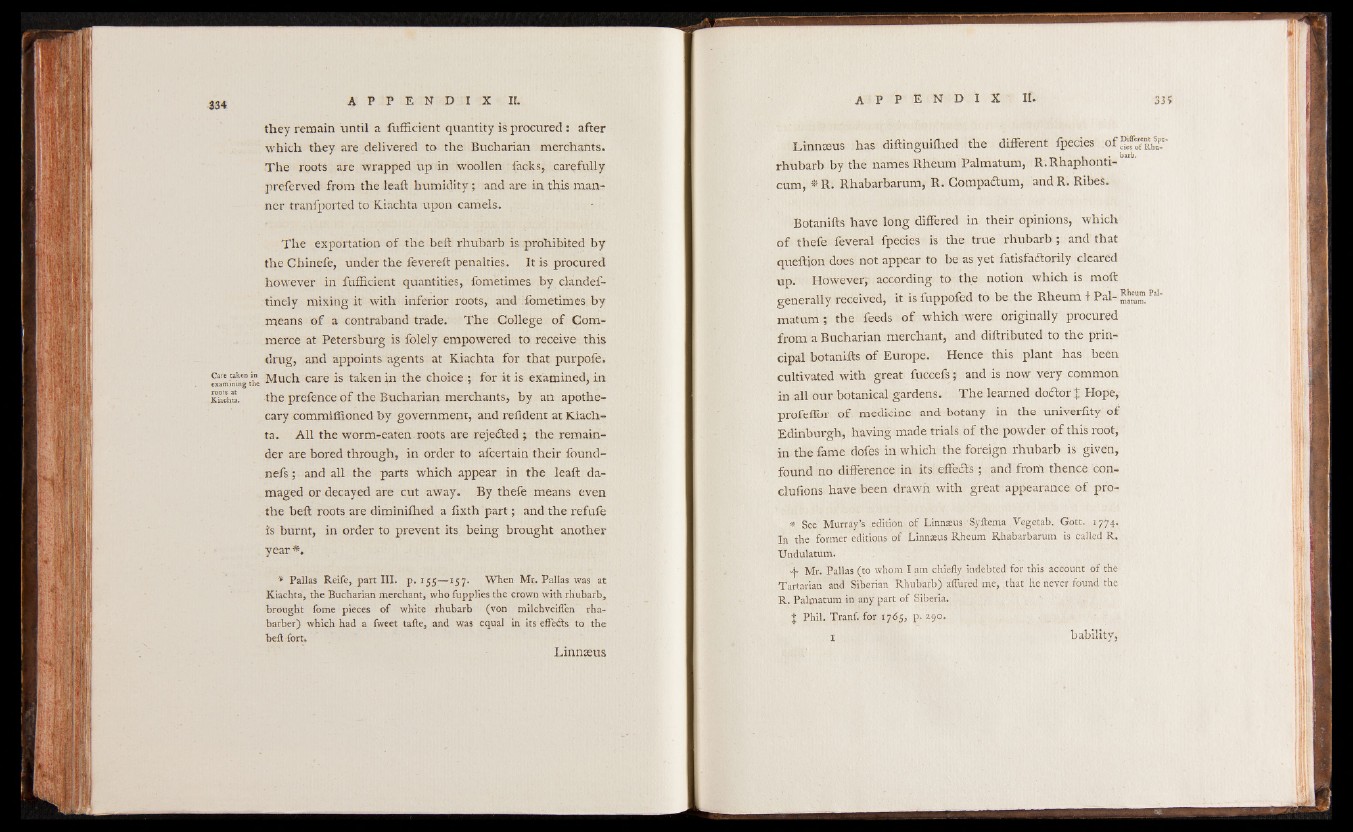
they remain until a fufficient quantity is procured : after
which they are delivered to the Bucharian merchants.
The roots are wrapped up in woollen facks, carefully
preferved from the leaft humidity; and are in this manner
tranfported to Kiachta upon camels.
The exportation of the beft rhubarb is prohibited by
the Chinefe, under the fevereft penalties. It is procured
however in fufficient quantities, fometimes by clandef-
tinely mixing it with inferior roots, and fometimes by
means o f a contraband trade. The College o f Commerce
at Petersburg is folely empowered to receive this
drug, and appoints agents at Kiachta for that purpofe.
raamMn "tire Much care is taken in the choice ; for it is examined, in
KiTciua. the prefence of the Bucharian merchants, by an apothecary
commiffioned by government, and refident at Kiachta.
All the worm-eaten roots are rejected; the remainder
are bored through, in order to afcertain their found-
nefs ; and all the parts which appear in the leaft damaged
or decayed are cut away. By thefe means even
the beft roots are dimlniffied a fixth part; and the refufe
is burnt, in order to prevent its being brought another
year *.
'* Pallas Reife, part III. p. 155— 157. When Mr. Pallas was at
Kiachta, the Bucharian merchant, who fupplies the crown with rhubarb,
brought fome pieces o f white rhubarb (von milchveifien rha-
barber) which had a fweet tafte, and was equal in its effedts to the
beft fort.
Linnæus
Linnæus has diftinguiffied the different fpecies of
rhubarb by the names Rheum Palmatum, R.Rhaphonti-
cum, * R. Rhabarbarum, R. Compa&um, and R. Ribes.
Botanifts have long differed in their opinions, which
of thefe feveral fpecies is the true rhubarb ; and that
queftion does not appear to be as yet fatisfadtorily cleared
up. However, according to the notion which is moft
generally received, it is fuppofed to be the Rheum t Pal- ™'uu” Pa1’
matum ; the feeds of which were originally procured
from a Bucharian merchant, and diftributed to the principal
botanifts of Europe. Hence this plant has been
cultivated with great fuccefs ; and is now very common
in all our botanical gardens. The learned dodtor J Hope,
profeffor of medicine and botany in the univerfity of
Edinburgh, having made trials of the powder of this root,
in the fame dofes in which the foreign rhubarb is given,
found no difference in its effetfts ; and from thence conclurions
have been drawn with great appearance of pro-
* See Murray’s edition o f Linnæus Syftema .Vegetab. Gott. 1774.
In the former editions of Linnæus Rheum Rhabarbarum is called R.
Undulatum.
4 - Mr. Pallas (to whom I am chiefly indebted for this account o f the
Tartarian and Siberian Rhubarb) allured me, that he never found the
R. Palmatum in any part of Siberia.
I Phil. Tranf. for 1765, p. 290.
I bability,